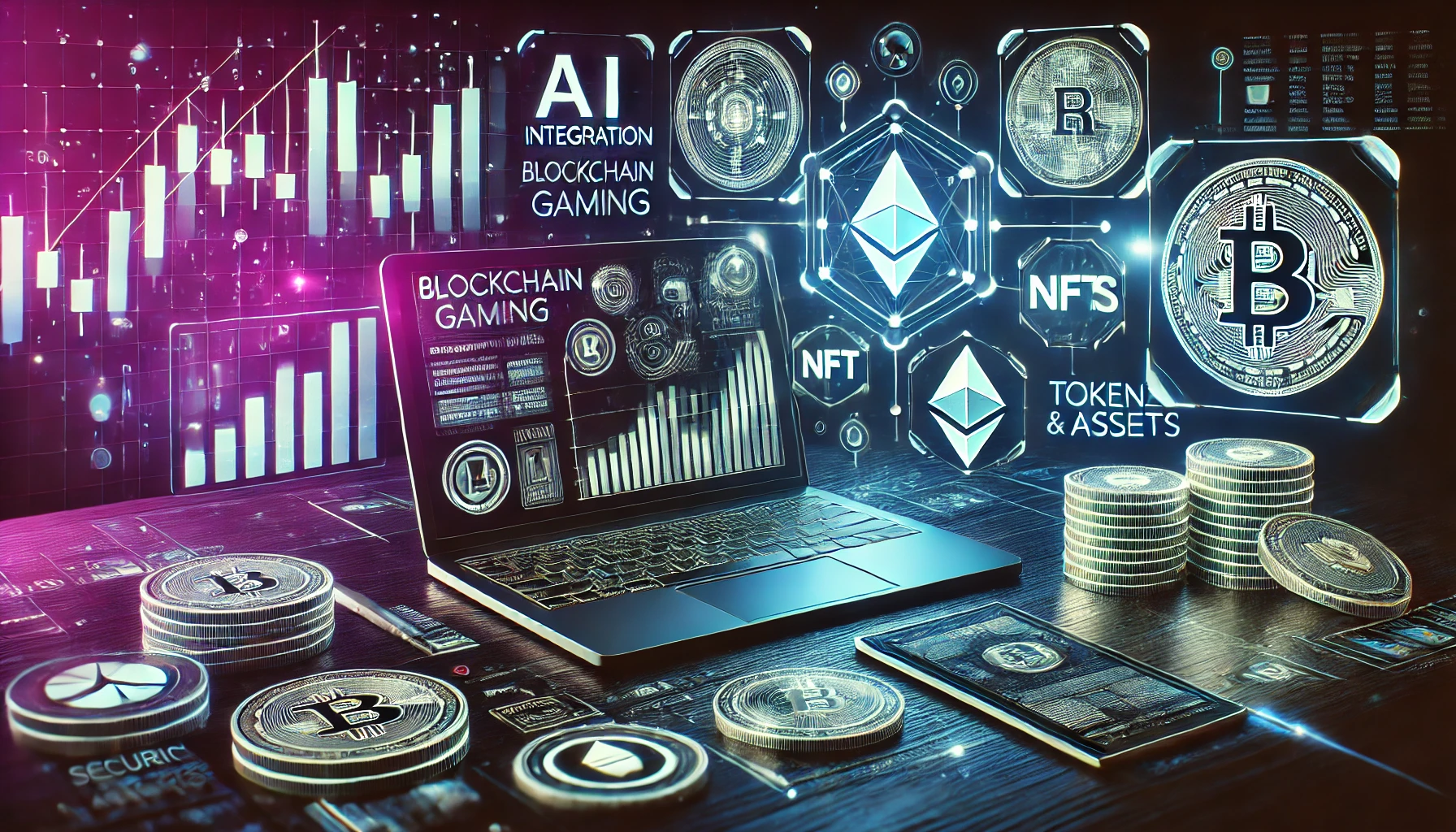The cryptocurrency and blockchain industry is undergoing a seismic shift, characterized by rapid technological advancements and evolving market dynamics. As digital assets gain mainstream acceptance, several key trends are shaping the future of this space. From the integration of artificial intelligence to the tokenization of real-world assets, the landscape is becoming more complex and interconnected.
1. AI Integration in Cryptocurrency and Blockchain
Artificial intelligence (AI) is increasingly playing a pivotal role in the cryptocurrency market, enhancing everything from trading algorithms to security protocols. AI’s ability to process massive amounts of data and identify patterns has made it indispensable for traders seeking an edge in highly volatile markets. AI-driven analytics are now being used to predict price movements, assess market sentiment, and optimize portfolio management.
Moreover, AI’s role in blockchain extends beyond trading. Smart contracts, powered by AI, are becoming more sophisticated, enabling automated and reliable execution of complex agreements without the need for intermediaries. This integration of AI not only increases efficiency but also bolsters security by identifying and mitigating threats in real-time.
2. The Exponential Growth of Blockchain Gaming
Blockchain gaming has emerged as one of the fastest-growing sectors within the crypto industry. Play-to-Earn (P2E) models, where players earn cryptocurrencies or NFTs by participating in games, have revolutionized the traditional gaming industry. Platforms like Axie Infinity and The Sandbox have shown how blockchain can empower gamers with true ownership of in-game assets, which can be traded or sold outside the game environment.
In addition, the interoperability of NFTs across multiple games is creating a unified digital ecosystem. As more traditional game developers explore blockchain integration, this sector’s growth is expected to accelerate, attracting millions of new users to the crypto space.
3. The Rise of Tokenization of Real-World Assets
Tokenization is transforming how real-world assets such as real estate, commodities, and even art are bought, sold, and managed. By converting physical assets into digital tokens on a blockchain, tokenization enables fractional ownership, reducing barriers to entry for small investors. This trend is particularly noticeable in real estate, where tokenized properties can be bought and sold with ease, providing liquidity to an otherwise illiquid market.
Commodities like gold and oil are also being tokenized, allowing investors to trade these assets 24/7 without the constraints of traditional markets. The ability to trade tokenized assets with transparency and security is not only democratizing access to investments but also paving the way for new financial products and services.
4. Increasing Focus on Regulatory Compliance
As cryptocurrencies gain traction, regulatory scrutiny is intensifying globally. Governments and financial regulators are working to establish frameworks that balance innovation with investor protection. The introduction of MiCA (Markets in Crypto-Assets) regulation in the European Union and the U.S. SEC’s increasing oversight on crypto exchanges are clear indications that regulatory compliance will be a critical focus for the industry moving forward.
Regulatory clarity is expected to boost institutional participation, as more hedge funds and investment firms consider entering the crypto market. Compliance with anti-money laundering (AML) and know-your-customer (KYC) regulations is also becoming standard practice for exchanges and DeFi platforms.
5. Expansion of DeFi and Cross-Chain Solutions
Decentralized Finance (DeFi) continues to expand, offering a range of financial services such as lending, borrowing, and yield farming without intermediaries. However, the real breakthrough is occurring in cross-chain solutions that enable interoperability between different blockchains. Protocols like Polkadot and Cosmos are leading this charge, allowing assets and data to move seamlessly across chains.
Cross-chain interoperability addresses one of the biggest limitations of DeFi—its fragmentation. By enabling different blockchains to communicate, cross-chain solutions are laying the groundwork for a more integrated and scalable DeFi ecosystem.
Challenges on the Horizon
Despite these promising trends, the crypto industry faces several challenges:
- Security Risks: The rise of DeFi and blockchain gaming has also led to a surge in hacking incidents and smart contract vulnerabilities.
- Regulatory Uncertainty: Inconsistent regulations across different jurisdictions continue to pose risks for investors and projects alike.
- Scalability Issues: As adoption grows, the need for scalable blockchain solutions becomes more urgent, especially with energy consumption concerns on proof-of-work networks.
A Future Shaped by Innovation
The cryptocurrency and blockchain industry is evolving at an unprecedented pace, with AI integration, tokenization, and DeFi leading the charge. As regulatory frameworks catch up, these trends are likely to accelerate, making digital assets a central component of the global financial ecosystem. For investors and developers alike, staying ahead of these trends will be crucial in navigating this rapidly changing landscape.
The coming years promise to be transformative, with opportunities and risks in equal measure. As the industry matures, the winners will likely be those who can balance innovation with security and compliance.




